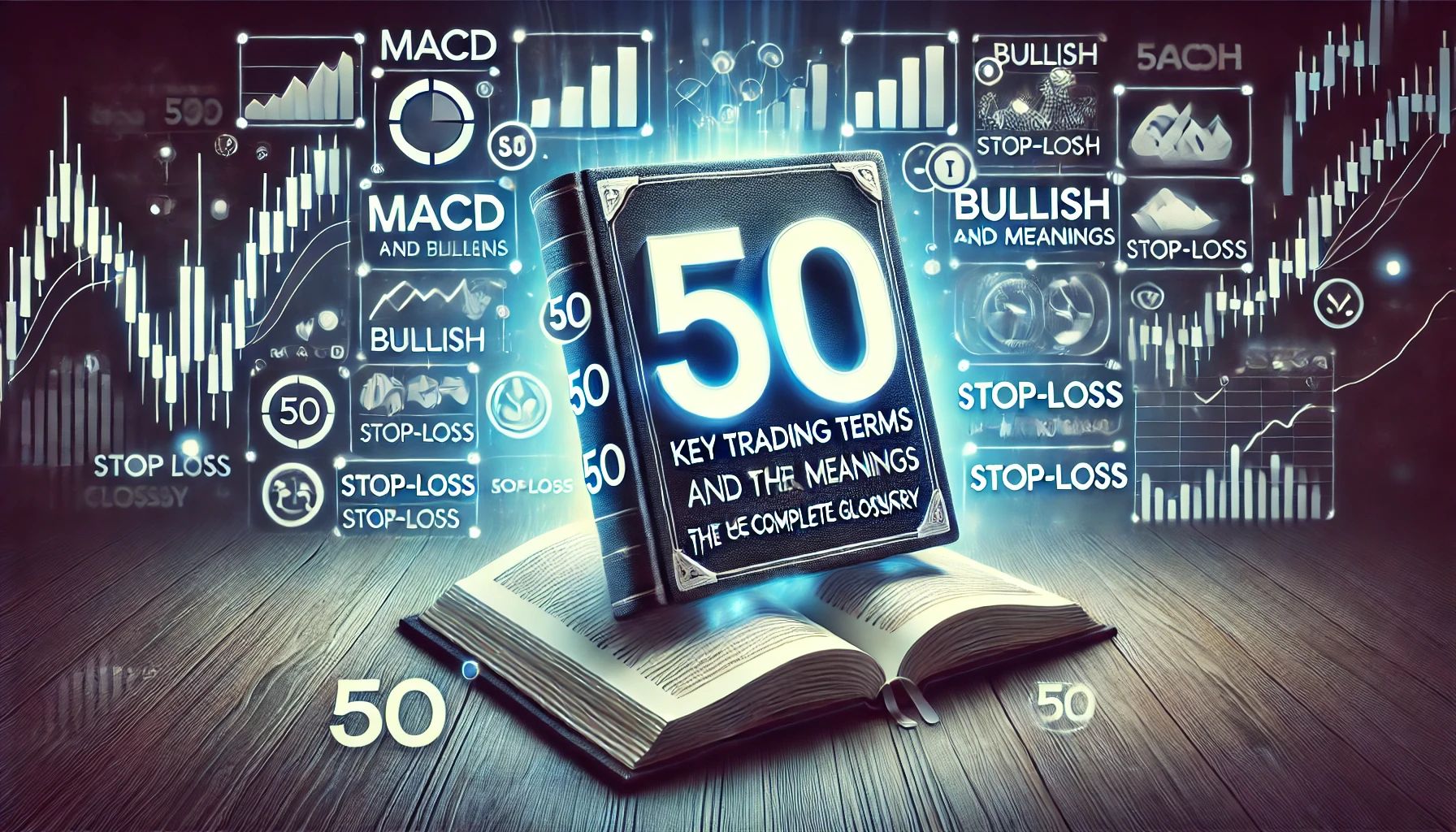To succeed in trading, it’s essential to understand the key terms used in the financial markets. We’ve compiled a comprehensive list of 50 crucial trading terms with clear explanations to help you feel confident navigating the market.
Basic Terms:
1. Asset: A financial instrument that can be bought or sold, such as stocks, cryptocurrencies, or currency pairs.
2. Bull Market: A market characterized by a sustained increase in prices.
3. Bear Market: A market characterized by a sustained decline in prices.
4. Liquidity: The ability of an asset to be quickly bought or sold without significantly affecting its price.
5. Volatility: A measure of how much the price of an asset fluctuates over a certain period.
Types of Orders:
6. Market Order: A request to buy or sell an asset at the current market price.
7. Limit Order: An order to buy or sell an asset at a specified price or better.
8. Stop-Loss: An order that automatically closes a position once a certain loss level is reached.
9. Take-Profit: An order that automatically closes a position once a predefined profit level is reached.
10. Pending Order: An order that is triggered when the price reaches a specific level.
Market Analysis:
11. Technical Analysis: The study of charts and indicators to predict price movements.
12. Fundamental Analysis: Evaluating economic factors, such as company reports and news, to forecast price movements.
13. Indicators: Tools used for chart analysis, such as RSI or MACD.
14. Support and Resistance Levels: Price levels where the asset is likely to stop or reverse its movement.
15. Candlestick Patterns: Graphical formations that help predict price behavior.
Types of Trading:
16. Scalping: A short-term strategy involving multiple trades within a single day.
17. Day Trading: Opening and closing all trades within the same day.
18. Swing Trading: Holding positions for several days to weeks to capture medium-term price movements.
19. Investing: Buying assets for long-term holding (months or years).
20. Arbitrage: Exploiting price differences for the same asset across different markets.
Key Concepts:
21. Leverage: Using borrowed funds to increase the size of a trade.
22. Margin: A security deposit required when trading with leverage.
23. Lot: A unit of measurement for trade volume.
24. Pip: The smallest price movement in the forex market.
25. Average Price: The average cost of an asset in a portfolio.
Risk and Management:
26. Risk Management: Strategies to minimize losses.
27. Diversification: Spreading investments across various assets to reduce risk.
28. Drawdown: The maximum decline in capital from its peak.
29. Risk/Reward Ratio: A comparison of potential risk to potential profit in a trade.
30. Liquidation: The forced closure of a position by a broker due to insufficient funds.
News and Events:
31. Economic Calendar: A schedule of important events and news that impact the markets.
32. Force Majeure: Unpredictable events affecting the market, such as natural disasters.
33. Dividends: Payments made to shareholders from a company’s profits.
34. Wave Analysis: Analyzing market trends based on Elliott Wave Theory.
35. Flat Market: A market without a clear trend.
Cryptocurrency Terms:
36. Blockchain: The technology that underpins cryptocurrencies.
37. Halving: An event where the reward for mining cryptocurrency is reduced by half.
38. Altcoin: Any cryptocurrency other than Bitcoin.
39. Decentralization: The absence of central control over a system.
40. ICO (Initial Coin Offering): The initial sale of tokens to raise funds for a project.
Trading Strategies:
41. Hedging: A strategy to protect against risk by opening opposite positions.
42. Trend: The overall direction of price movement.
43. Countertrend: Trading against the current trend.
44. Fibonacci Levels: Retracement levels based on the Fibonacci sequence.
45. Supply and Demand Zones: Areas where price is likely to reverse.
Trading Psychology:
46. Emotional Trading: Making decisions based on emotions rather than analysis.
47. Patience: A key factor in successful trading.
48. Discipline: Following predefined trading rules.
49. Greed: The desire for excessive profits, often leading to risky decisions.
50. Fear: An emotion that prevents rational decision-making.
💡 This glossary is your first step toward successful trading. Save this page and refer back to it whenever you need to refresh your knowledge or explore new terms!



